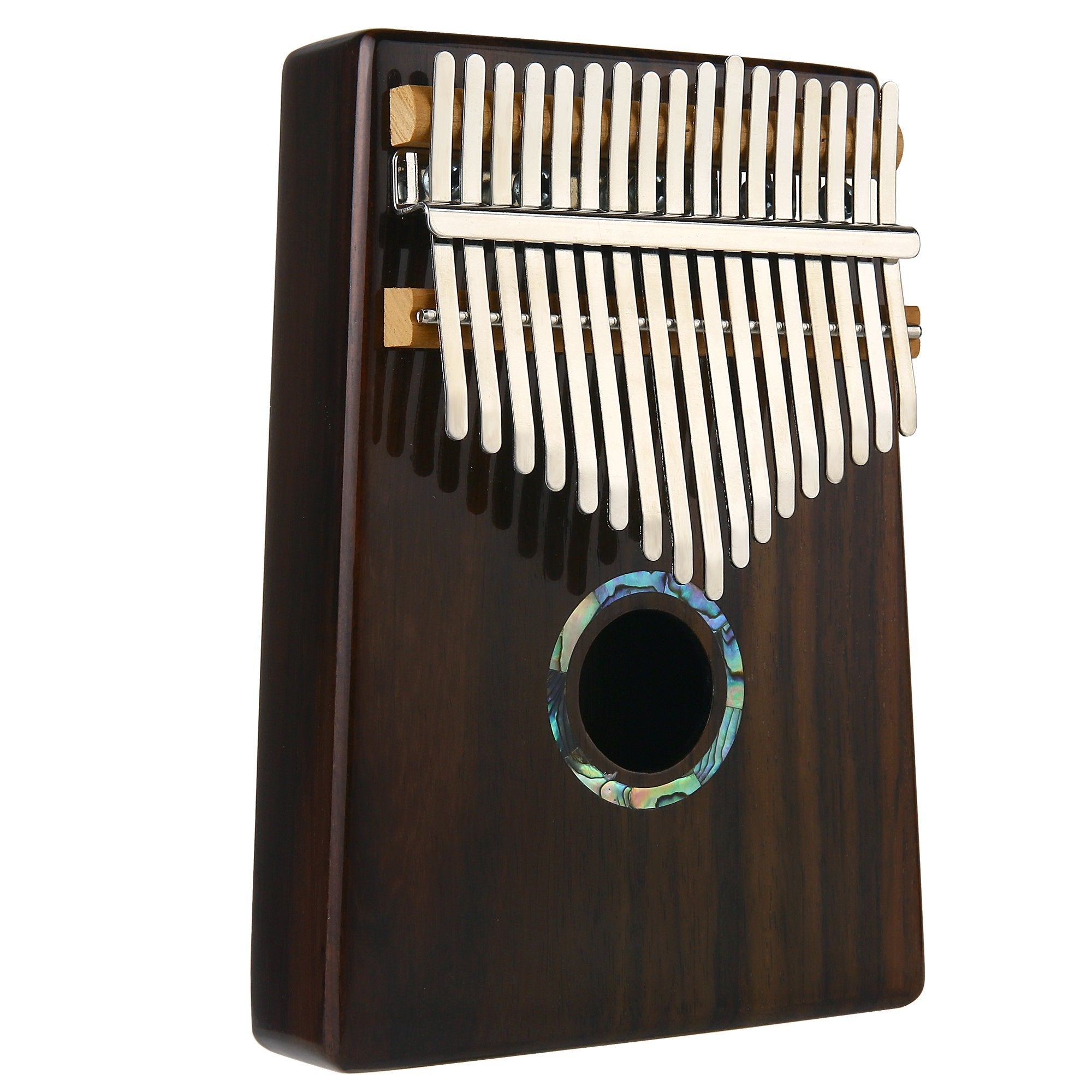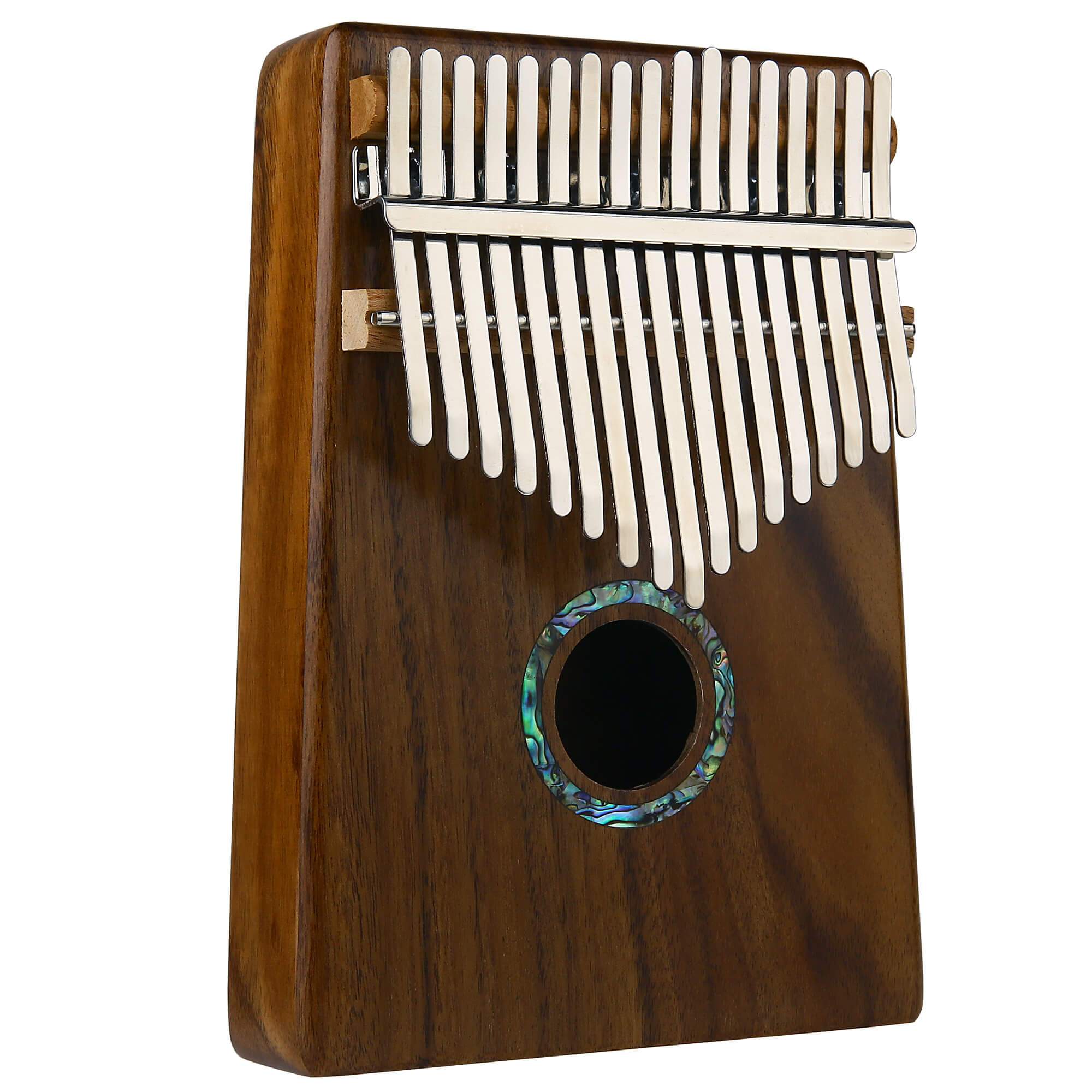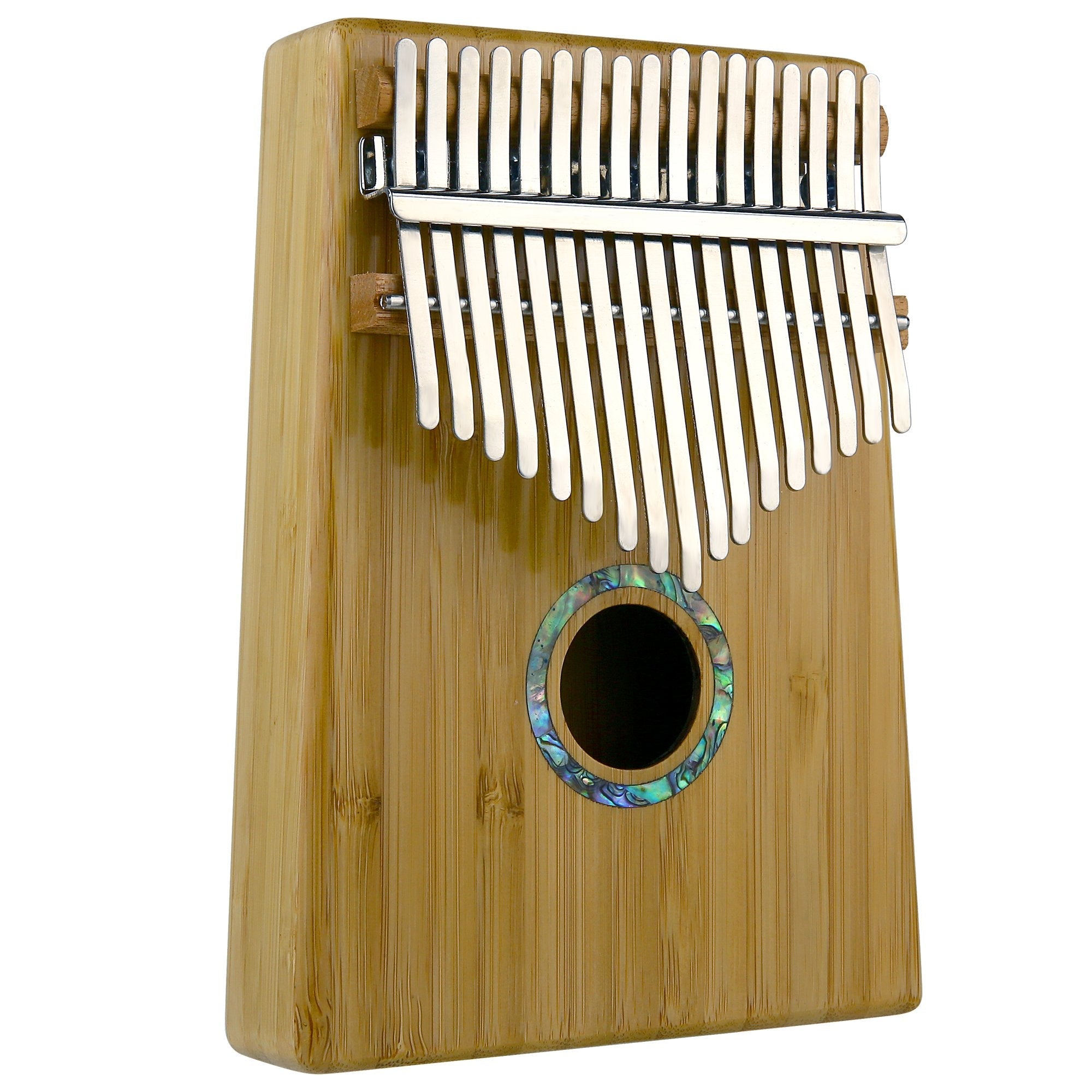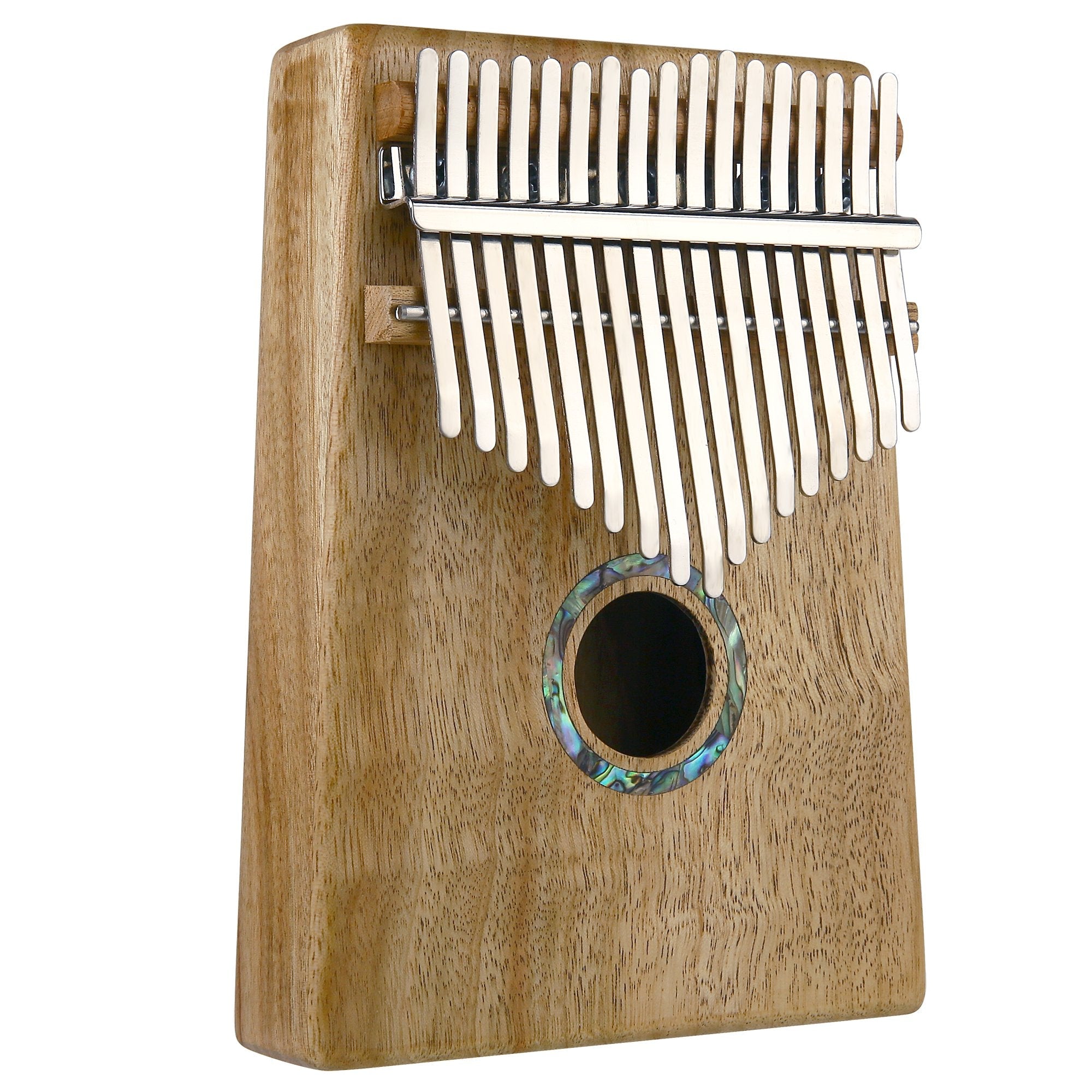How To Tune A Kalimba

The Easy Method For Tuning And Re-Tuning A Kalimba
At some point in time, your Kalimba is going to need to be tuned. All instruments with moving parts can and will slip out of tune occasionally. This is natural and common, even in Kalimbas.
A well made Kalimba adjusted properly can hold its tuning for a few weeks (or longer). This of course varies by usage and can change from climate to climate. If you're an aggressive player your instrument will go out of tune quicker.
And if you drop your Kalimba you may need to retune.
At first you may not notice your Kalimba slipping out of tune. It’s a gradual process and you might need to develop an ear for the subtle tuning changes.
I’m always in the camp of prevention. I recommend checking your tuning occasionally instead of waiting for your Kalimba to go out of tune. The good news is the process is pretty straightforward, and only requires one thing besides your Kalimba: A tuner.
Why Does My Kalimba Go Out Of Tune?
Over time the tines will move microscopically. The human ear has a threshold for detecting notes that are out of tune, but it takes many of these microscopic variances to enter that threshold. When they do, and once you can hear the out of tune note, it’s hard to ignore!
And like I mentioned earlier, a hard player can assist in putting the tines out of tune. In addition to any sudden impacts like drops or snags on clothing.
This is all natural. Even though tines are fastened securely and a hard material, they’re still susceptible to movement.
So whether you can hear out of tune notes, or you’re just performing a routine tuning check, here’s the process of getting your Kalimba back in tune.
How Do You Tune A Kalimba?
If this is your first time tuning a Kalimba, you should plan on about 30 minutes. But don’t worry, this gets much easier with practice. Once you do this a few times, you’ll only need to spend a few minutes doing this.
I would recommend sticking with the tuning your Kalimba came with. For most people this will be C Major.
Standard C Major Tuning
If you don’t have a tuner you can download a tuner app on your smartphone. Every tuner will have the same basic function: It will tell you the note (like C) and tell you if you’re flat or sharp.
Take a look at the below image of a Korg tuner (Korg is a trusted brand in tuners). The note is a perfect A. If the needle was pointing to the left of the center, the note would be flat and would need to be tuned up.
If the needle was pointing to the right of the center, the note would be sharp and would need to be tuned down
It’s a balancing act of finding the perfect spot.
C Major is great to use at first because there aren’t any flats or sharps in the key. The notes are C-D-E-F-G-A-B.
You might find that your tuner reads a note that isn’t in the key. Say C#. If you find this happening you’ll need to either tune it down to C, or tune it up to D, depending on the target note. But just think alphabetically.
Start from the outside of the Kalimba and work your way in. I’m right handed so for me it’s easier to work from the right side to the left. Ultimately it doesn’t matter as long as every note is tuned.
Play the first note you’re going to tune and look at the tuner. I’ll play the note 2 or 3 times to make sure the tuner registers it correctly.
- If the note is sharp you’ll need to move the tine towards you.
- If the note is flat you’ll need to move the tine away from you.
These changes are slight and should be taken little by little. When you make any tuning adjustment you’ll need to gently pull or push the tine. It helps to wiggle it side to side. Again, take your time and make small changes.
For the sharp notes you might find a tuning hammer to be a better option than the wiggle and pull. Just be careful not to hit your instrument! Gently tap the top of the tine so it moved toward the sound hole.
Conversely, if your note is flat you can use the tuning hammer to gently tap the tine upwards (away from the sound hole).
Go slow, and try not to get frustrated if you overshoot the note. Tuning is a skill that takes time to develop.
Alternate Tunings For Kalimbas
The two most common tunings for a Kalimba are C Major (which we talked about in the last section) and G Major. These are the most common keys because they’re the most common keys among other instruments.
Standard G Major Treble Kalimba Tuning
Tuning to a common key lets you play with other musicians more easily.
On the diagram of both the C Major and G Major tunings, the numbers are the scale degrees. Let’s look at the C Major scale.
C-D-E-F-G-A-B
The C is the first note, and can also be represented by the number 1. Since it’s the first note (or “degree” in the scale. The D can be represented as 2 since it’s the second note (or “degree”) in the scale.
So, C-D-E-F-G-A-B can be represented with 1-2-3-4-5-6-7.
The “8” on the tuning chart is the root note, an octave up. So C in our example.
In some tunings the lowest note will be the root (or 1) note. Sometimes it will be the 3rd. In your own tunings you can decide. This is how traditional tunings in Zimbabwe number in the hundreds. (and they are also not using just the 12 tone Western scales).
Knowing the notes of a given scale takes time to learn, but hopefully this helps you understand the method of how tunings are created.
Here are a couple easy alternate tunings to get you started.
D Major
D Treble Tuning
D Major is a common key across a lot of stringed instruments.
Bb Major
Bb Treble Tuning
If you want to play along with wind instruments, Bb Major tuning is a great option.
Before you go out and blaze your own tuning trails, start by learning these and getting familiar with them. Once you have 2 or 3 of these down, then explore to your hearts content!
 Lifetime Warranty
Lifetime Warranty  60 Day Returns Policy
60 Day Returns Policy 1-2 Day Delivery
1-2 Day Delivery 


































Leave a comment